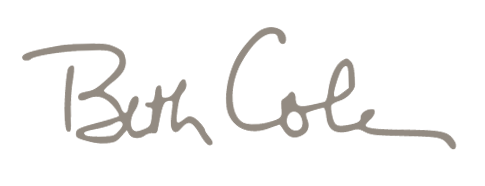Painting With Oils - Part One
/What I Have Learned So Far About Painting With Oils
(Work in Progress) - Oil on Panel - 8 x 10 - © Beth Cole
This is the first in a series of articles I want to write about painting with oils. Before I started painting with oils I was pretty intimidated. Tales of trash cans bursting into flame and toxic materials with strict handling rules kept me tiptoeing around them for sure.
But as I have continued to study master artists and great paintings that I really like, most of them are done in oil. So, a few years ago, I started learning more about the process of oil painting and while I certainly don’t know it all, I am happy to share what I have learned.
What Paint to Buy
There is a difference in paint quality. If you are just experimenting and on a budget, the student grade or tinted varieties might get you by (i.e. Winton), but for serious and intentional painting, I think it is best to purchase the best quality you can afford.
I have tried Rembrandt, Winsor & Newton, and Gamblin – they are all quite nice.
Gamblin, I think, is a bit stiffer than the two other brands, but I like the consistency of the product line, most of my paint is Gamblin. I really love the Rembrandt paints, and may start working them in more and more to my palette.
As far as setting up the palette, I use a 16 x 20 piece of glass that my husband bought from the local glass store. I like it because it is easy to clean with a razor blade tool.
I try to keep color families together and I separate the cooler colors from the warmer with the whites. So in the lower left corner are blues and greens, then warm white and cool white, then on the top side of the palette, yellows, orange and red. If I use earthy colors like raw umber, burnt sienna or asphaltum, they go together on far top right. I don't always use those, just once in awhile. My palette is not so tidy like other people's I have seen.
My go-to colors are Ultramarine Blue, Cobalt Blue, Warm White, Titanium White, Cadmium Yellow Light (sometimes Cad Yellow Deep), Yellow Ochre, Transparent Orange (mostly for mixing), Cadmium Red Light, Alizarin Crimson, Transparent Red Oxide. I will use a touch of Prussian Blue or Veridian from time to time as well. I have found by limiting my palette to warm and cool of each of the primary colors, I am able to mix a wide variety of shades including grays.
If I will be out of the studio for more than a day, I pick up the whole palette and place it in my deep freeze. This is a great way to keep your paint fresh and usable for the next session. Works like a charm.
Next up, mixing colors and using medium.
Thanks for following along, I am grateful for you!
--Beth


